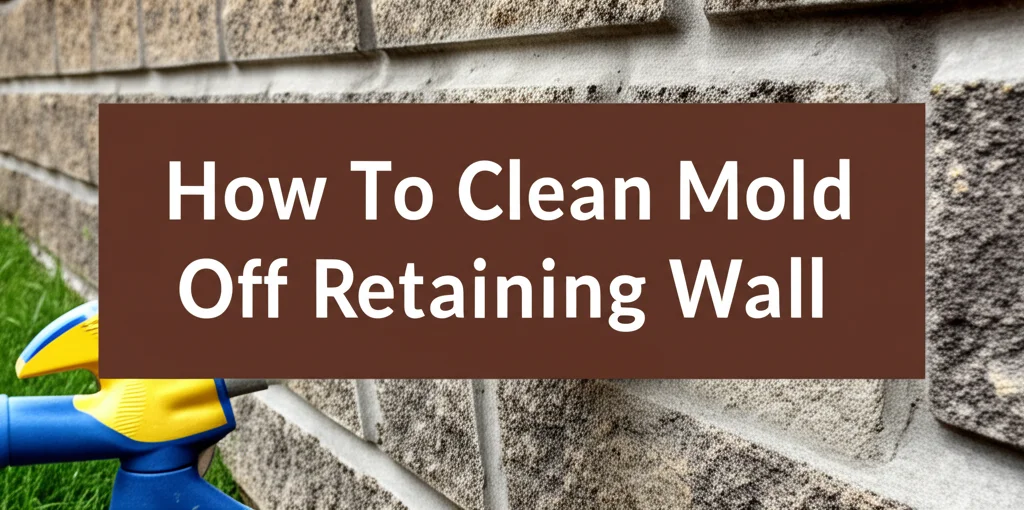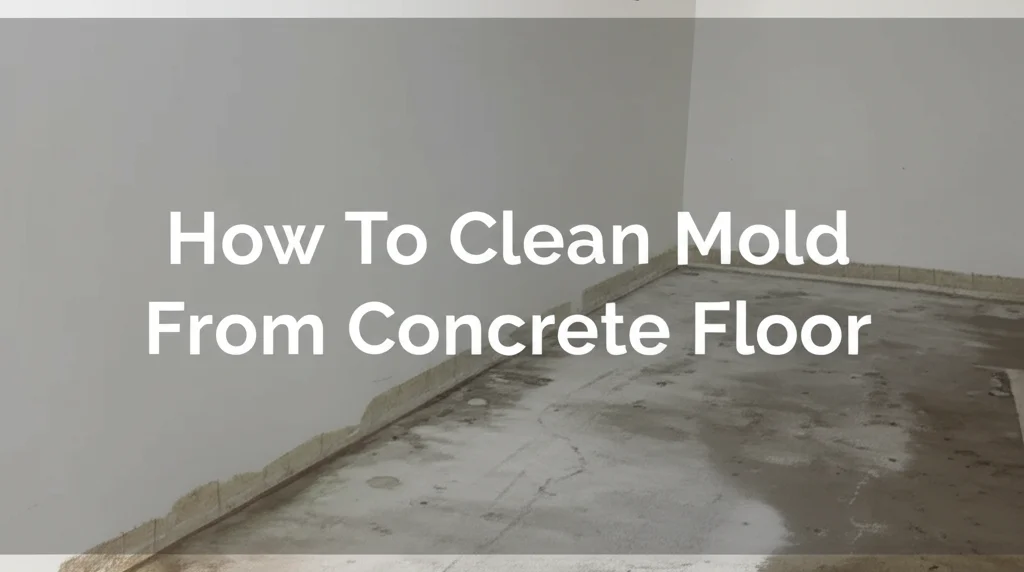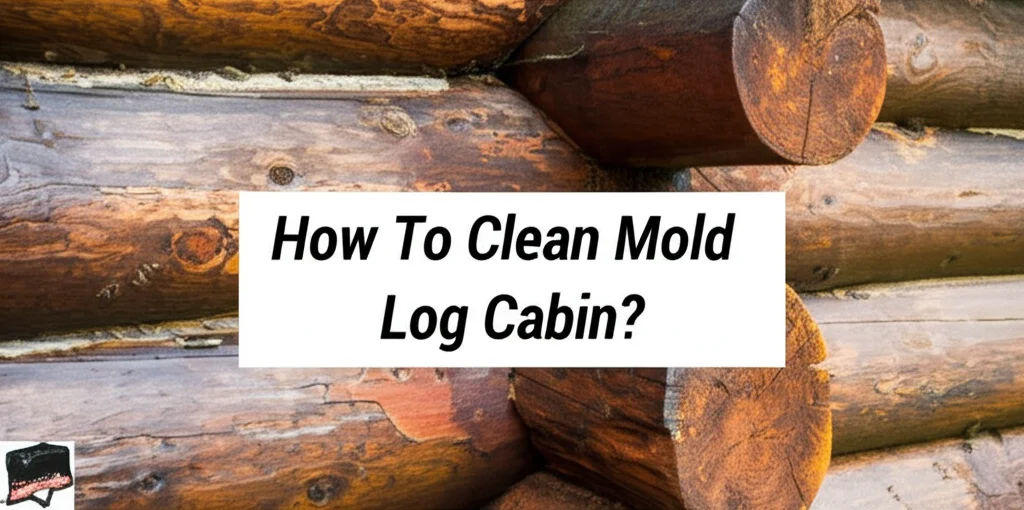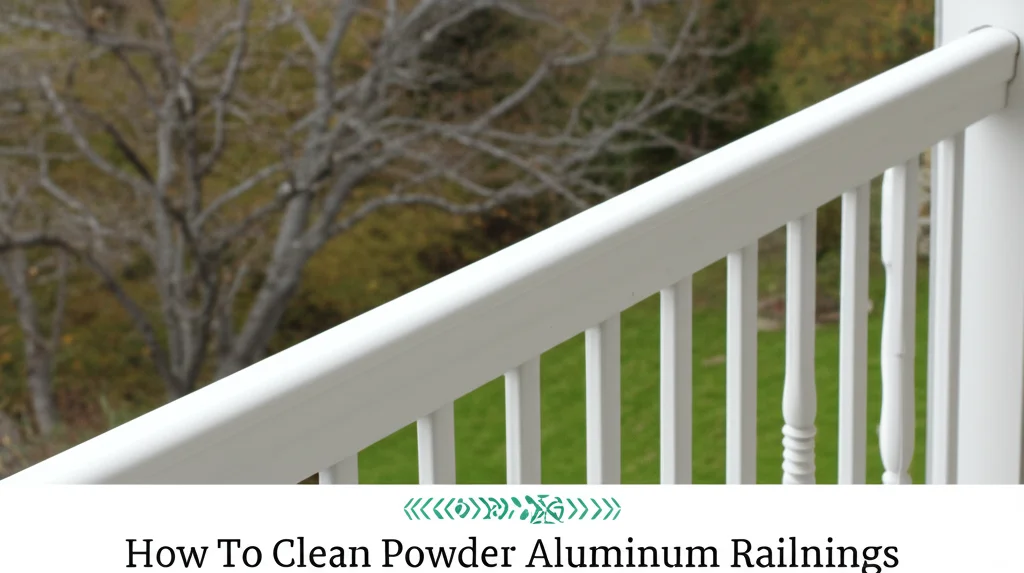· Home Improvement · 7 min read
How To Clean Mold Off Retaining Wall

How To Clean Mold Off Your Retaining Wall
Have you noticed unsightly black or green patches appearing on your retaining wall? That’s likely mold, and it’s more than just an aesthetic issue. Mold growth on retaining walls can compromise the structure over time and even pose health risks. This article will guide you through effectively cleaning mold off your retaining wall, helping you restore its appearance and protect your property. We’ll cover everything from identifying the type of mold to choosing the right cleaning solutions and preventative measures. Let’s get started!
Takeaway:
- Identify the mold type and wall material.
- Prioritize safety with protective gear.
- Use appropriate cleaning solutions (vinegar, bleach, or commercial mold removers).
- Scrub thoroughly and rinse well.
- Implement preventative measures to avoid regrowth.
Quick Answer:
Cleaning mold off a retaining wall involves identifying the mold, wearing protective gear, applying a cleaning solution like vinegar or bleach, scrubbing the surface, rinsing thoroughly, and taking steps to prevent future growth. The best approach depends on the wall material and the severity of the mold.
Understanding Mold Growth on Retaining Walls
Mold thrives in damp, shady environments, making retaining walls prime real estate for its growth. Retaining walls often hold moisture against them, especially after rain or irrigation. This creates the perfect breeding ground for mold spores. Different types of mold can appear, ranging in color from black and green to white and orange.
Understanding why mold grows is the first step to tackling the problem. Poor drainage, nearby vegetation, and even the wall’s material can contribute to mold development. Common materials like concrete, brick, and stone are all susceptible, though some are more porous and retain moisture more readily. Ignoring mold isn’t an option; it can weaken the wall’s structure and potentially affect your home’s air quality.
Safety First: Protecting Yourself During Mold Removal
Before you even think about cleaning solutions, prioritize your safety. Mold can cause allergic reactions, respiratory problems, and other health issues. Always wear appropriate protective gear when dealing with mold. This includes:
- Gloves: Heavy-duty rubber gloves to protect your skin.
- Mask: An N-95 respirator to prevent inhaling mold spores.
- Eye Protection: Goggles to shield your eyes from splashes and spores.
- Clothing: Wear old clothes that you can wash immediately after cleaning, or disposable coveralls.
Proper ventilation is also crucial. Work outdoors whenever possible. If you must work in a confined space, open windows and use a fan to circulate air. Remember, your health is the most important thing. Don’t underestimate the potential risks of mold exposure.
Choosing the Right Cleaning Solution for Your Wall
The best cleaning solution depends on the type of retaining wall material and the severity of the mold. Here are a few options:
- Vinegar: White vinegar is a natural, effective mold killer. It’s best for mild mold growth on less porous surfaces. Mix equal parts vinegar and water in a spray bottle.
- Bleach: Bleach is a powerful disinfectant, but it can damage some materials and is harmful to plants. Use a solution of one part bleach to ten parts water. Never mix bleach with other cleaning products, especially ammonia.
- Commercial Mold Removers: These are specifically formulated to kill mold and are available at most hardware stores. Follow the manufacturer’s instructions carefully.
- Oxygen Bleach (Sodium Percarbonate): A gentler alternative to chlorine bleach, oxygen bleach is effective on various surfaces and is less harmful to the environment.
Before applying any solution, test it on a small, inconspicuous area of the wall to ensure it doesn’t cause discoloration or damage. Always read and follow the safety instructions on any cleaning product. You can find more information on cleaning solutions at https://www.beacleaner.com/how-to-remove-mold-from-painted-walls/.
Step-by-Step Guide to Cleaning Mold Off Your Retaining Wall
Now that you’re prepared, let’s get to the cleaning process.
- Prepare the Area: Remove any plants or debris around the wall. Cover nearby plants with plastic sheeting to protect them from the cleaning solution.
- Apply the Cleaning Solution: Spray the chosen solution liberally onto the moldy areas. Let it sit for 10-15 minutes to allow it to penetrate the mold.
- Scrub the Surface: Use a stiff-bristled brush to scrub the mold off the wall. Apply firm pressure, but avoid damaging the surface. For stubborn mold, you may need to scrub multiple times.
- Rinse Thoroughly: Rinse the wall with clean water using a garden hose. Ensure all traces of the cleaning solution are removed.
- Inspect and Repeat: Inspect the wall for any remaining mold. If necessary, repeat the process.
- Allow to Dry: Allow the wall to dry completely. This may take several days, depending on the weather.
For particularly difficult mold infestations, consider using a pressure washer. However, be careful not to use too much pressure, as this can damage the wall. If you’re dealing with a large area, you might want to consider professional help.
Preventing Mold Regrowth: Long-Term Solutions
Cleaning the mold is only half the battle. Preventing it from returning is crucial. Here are some preventative measures:
- Improve Drainage: Ensure proper drainage around the retaining wall. This may involve installing French drains or adjusting the landscaping to direct water away from the wall.
- Trim Vegetation: Trim back any plants or shrubs that are touching the wall. This will improve airflow and reduce moisture buildup.
- Seal the Wall: Consider sealing the retaining wall with a waterproof sealant. This will help prevent water from penetrating the material.
- Regular Inspections: Regularly inspect the wall for signs of mold growth. Early detection allows for quicker and easier treatment.
- Ventilation: Ensure adequate ventilation around the wall.
Maintaining a dry environment is the key to preventing mold regrowth. Addressing drainage issues and keeping vegetation trimmed will go a long way in protecting your retaining wall. You can also learn more about preventing mold in other areas of your home at https://www.beacleaner.com/signs-of-mold-under-hardwood-floors-and-how-to-remove-it/.
Dealing with Different Retaining Wall Materials
Different materials require slightly different approaches.
- Concrete: Concrete is relatively durable and can withstand strong cleaning solutions. Bleach or commercial mold removers are generally effective.
- Brick: Brick is porous and can be damaged by harsh chemicals. Vinegar or oxygen bleach are better choices.
- Stone: Stone is also porous and requires gentle cleaning. Vinegar or oxygen bleach are recommended. Avoid using abrasive brushes that can scratch the surface.
- Wood: Wood retaining walls are particularly susceptible to mold. Treat with a wood preservative after cleaning to protect against future growth. You might also consider replacing severely damaged wood.
Always research the specific material of your retaining wall before choosing a cleaning solution. Understanding the material’s properties will help you avoid damage and ensure effective mold removal.
FAQ About Cleaning Mold Off Retaining Walls
Q: Is mold on a retaining wall dangerous?
A: Yes, mold can cause allergic reactions, respiratory problems, and other health issues. It can also weaken the wall’s structure over time. It’s important to address mold growth promptly and safely.
Q: Can I use a pressure washer to clean mold off a retaining wall?
A: Yes, but use caution. Too much pressure can damage the wall. Start with a low setting and gradually increase it as needed.
Q: How often should I clean mold off my retaining wall?
A: This depends on the climate and the wall’s location. Inspect the wall regularly and clean it whenever you notice mold growth. Annual cleaning is a good preventative measure.
Q: What’s the best way to prevent mold from growing back?
A: Improve drainage, trim vegetation, seal the wall, and regularly inspect for signs of mold. Maintaining a dry environment is key.
Q: Is it safe to use bleach around plants?
A: No, bleach can harm plants. Cover nearby plants with plastic sheeting before applying bleach to the wall.
Conclusion
Cleaning mold off your retaining wall is a manageable task that can protect your property and your health. By following the steps outlined in this guide – from prioritizing safety to choosing the right cleaning solution and implementing preventative measures – you can effectively remove mold and keep it from returning. Remember to always wear protective gear, test cleaning solutions before applying them, and address drainage issues to create a less hospitable environment for mold growth. Don’t hesitate to seek professional help if you’re dealing with a large or persistent mold problem. Taking proactive steps now will save you time, money, and potential health risks in the long run. If you’re looking for more cleaning tips, check out https://www.beacleaner.com/how-to-clean-floor-grout-without-scrubbing/ for advice on tackling other tough cleaning challenges.




